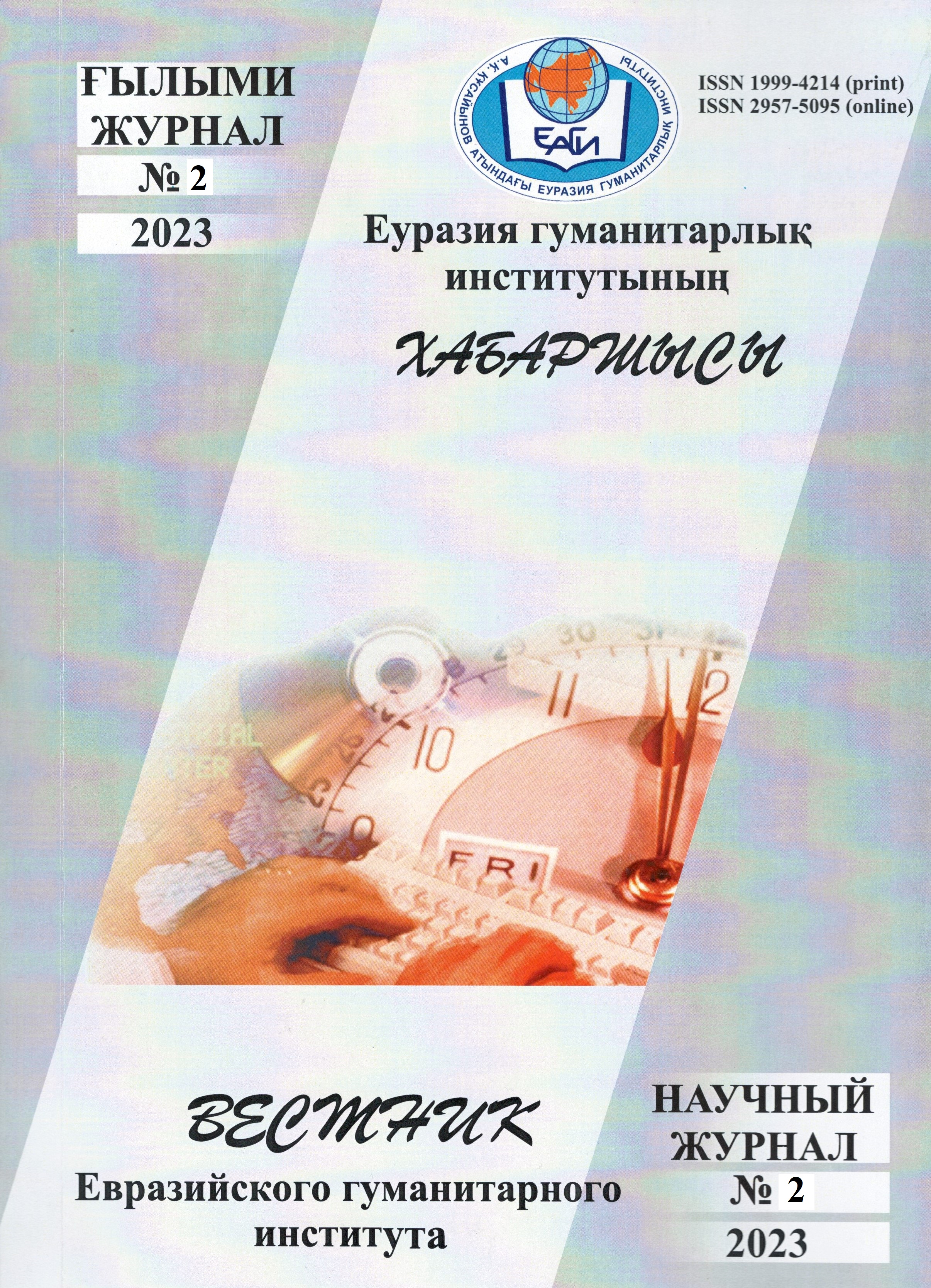*NAMES OF PETS IN PAREMIA - NATIONAL CODE
Keywords:
paremia, proverb, implicit information, linguistic unity, social code, cultural code, antithesis, synonym.Abstract
In the article paremia is analyzed and considered as an important source of folk knowledge in agriculture and meteorology. The purpose of the article is to show the features of the proverb containing the names of domestic animals, and thereby determine the knowledge of the people in creating a linguistic picture of the world, to open the national code based on this information.
Research work was carried out in the lexico-semantic, cognitive direction. The author considers paroemia, containing the names of domestic animals, as a special linguocultural unit that is passed down from generation to generation and forms the linguistic picture of the world of the Kazakh society.
During the study, special attention was paid to proverbs containing the names of domestic animals, as an important unit in determining national identity based on social conditions and cultural code. In disclosing information on the historical experience of the people in proverbs, special importance is attached to the cognitive function as national knowledge, social code, cultural code. At the same time, statistical information is provided on the use of collective names and individual names of domestic animals in the composition of proverbs and sayings.
The pragmatic potential of the names of domestic animals in the composition of proverbs and sayings is analyzed, their place is determined as a means of transferring in the perception of the world, the knowledge accumulated by people over the centuries. It is argued that proverbs, which include the names of domestic animals, are the main linguocultural units that form the knowledge base of the nation and carry cultural information, and the cultural codes behind the implicit information in them are revealed.
The conclusions drawn are substantiated by cognitive, statistical, comparative and descriptive methods and are proved by specific examples. Quotes are taken from proverbs. The practical significance of the article lies in the fact that its main results can be used in theoretical courses such as lexicology, cognitive linguistics, linguoculturology, as well as in seminars on the practice of teaching the Kazakh language.


